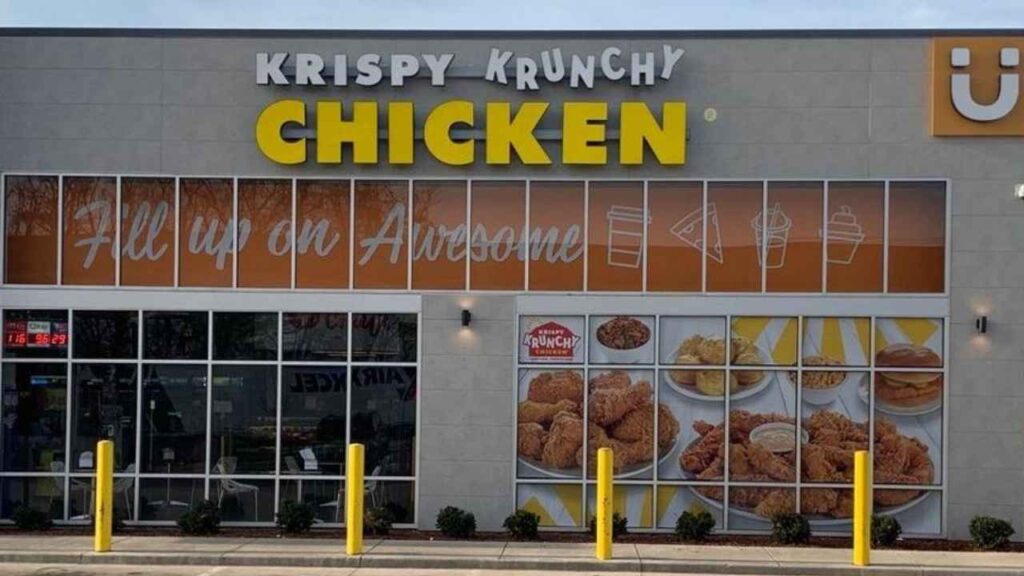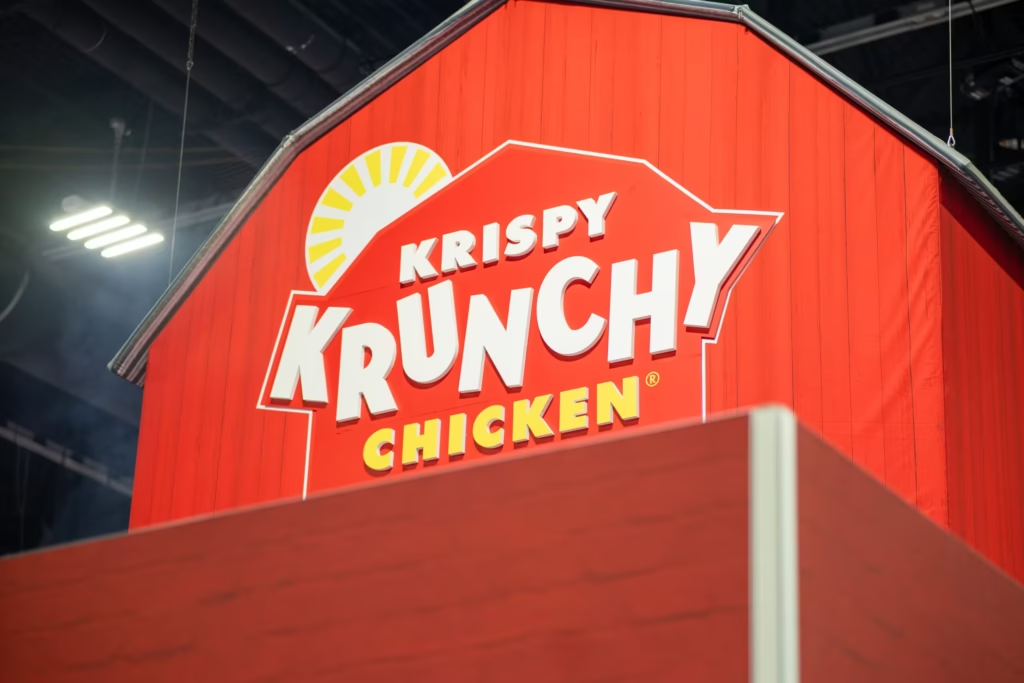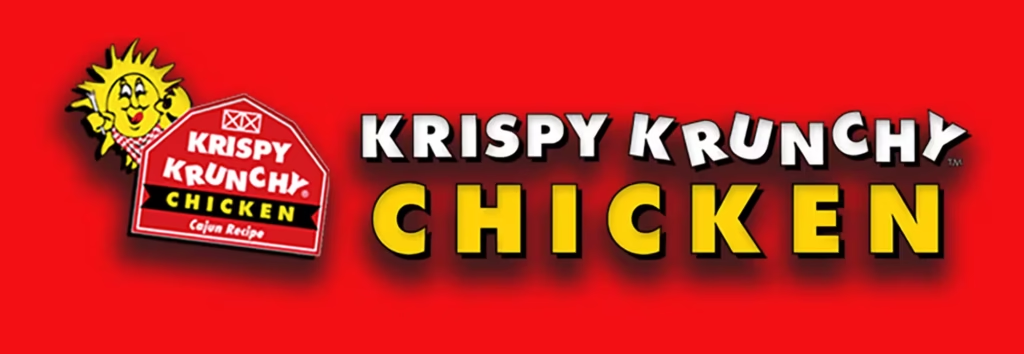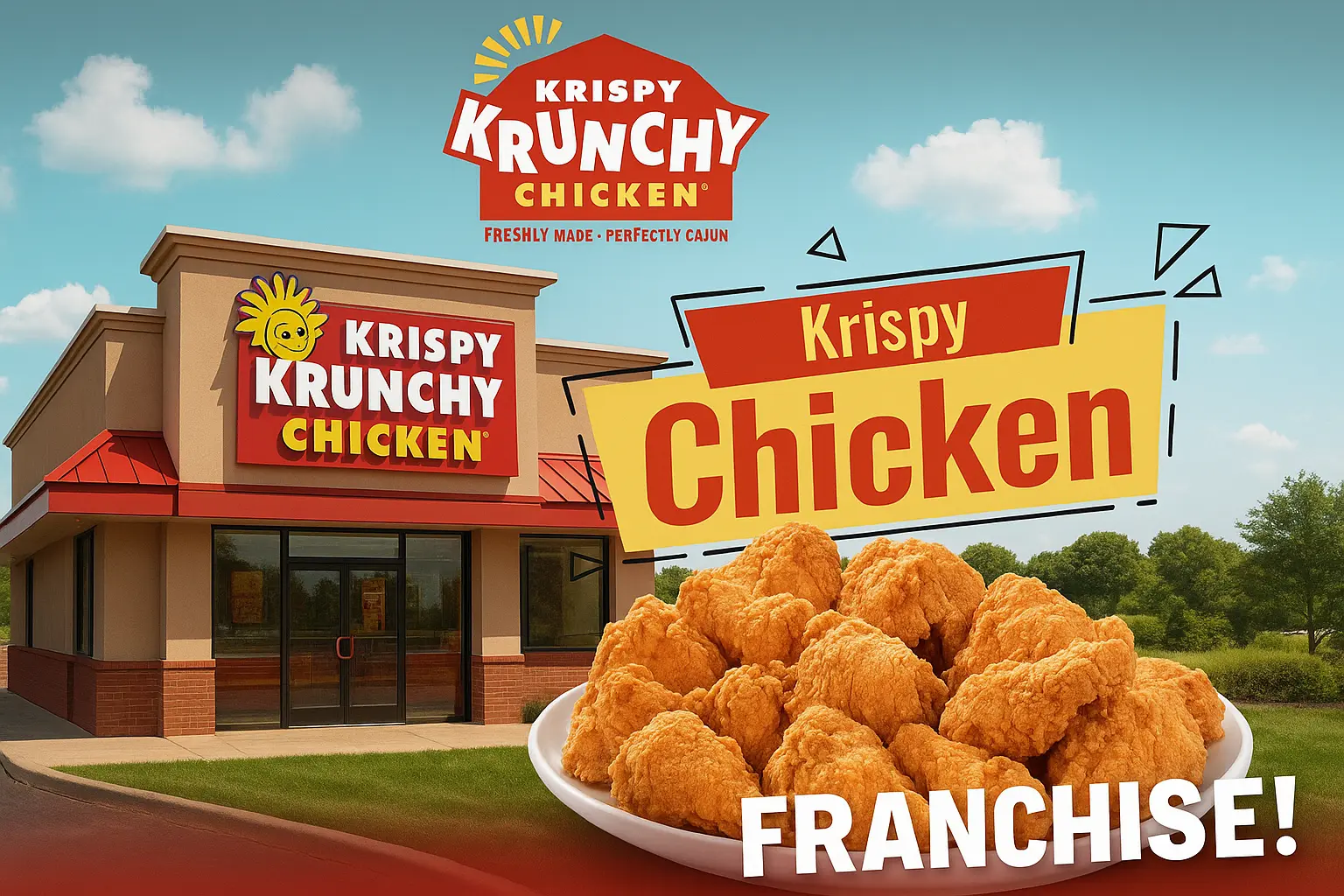Krispy Krunchy Chicken has become one of the most distinctive and fastest-growing brands of fried chicken in America and has transformed throughout the fast food biz by challenging its franchisee operations with a new and innovative strategy. The brand was established in 1989 in Southern Louisiana and luckily now has more than 3,200 restaurants located in 48 states, confirming the ability of great Cajun fried chicken to succeed even in non-traditional environments (convenience stores, gas stations, and grocery stores).
The competitive advantage of Krispy Krunchy Chicken, compared with the established fast-food franchise concept, is that there is a flexible, low-cost licensing program that enables current business operators to incorporate a lucrative food service outlet without engaging in a mega investment like a franchise restaurant business. Opening slightly more than 600 units in the year 2024, the brand believes that it can surpass that figure in the year 2025, showing its persistence of energy and attractiveness to individuals looking to become investment possibilities in the food service industry.
In this detailed guide, we will be deconstructing all that you should know about Krispy Krunchy Chicken franchise cost, including the initial investment needed and the recurring expenses, as well as the likelihood of making a profit. As a convenience store owner who wants to diversify their revenues or as an entrepreneur who wants to get into the food business with minimal risks, it is imperative that they become familiar with these financial details in order to get an accurate picture to make an informed decision.
Why Consider a Krispy Krunchy Chicken Franchise?
Perhaps the strongest argument in favor of adopting Krispy Krunchy Chicken is its unbelievably low initiation cost compared to conventional fast-food restaurants. Whereas large chains usually necessitate investments of at least $200,000 to $500,000 or even more, Krispy Krunchy Chicken’s initial investment is only between $10,000 and $30,000 and thus can be affordable to many more people in similar fields and businesses.
However, the fee structure of the Krispy Krunchy Chicken model is perhaps the most attractive thing about it. The company does not levy royalty or franchise fees, which is a considerable difference in comparison to the traditional franchise model, in which the royalty fees can take anywhere between 4% and 8% of gross sales on an indefinite basis. This exclusive methodology translates into an even larger percentage of your revenue in your bank account, with profit forecasts and returns on investments experiencing extreme broadening.
The integration model of the brand meets the needs of the existing business that wants to make the best of its retail space. The nature of the program is flexible enough to be located at convenience stores, malls, colleges, and supermarkets, so the established business owners can turn unutilized space into a productive source of revenue without having to build separate storefronts and racking up major construction expenses.
The demand among consumers to have grab-and-go fried chicken is increasing, especially in areas where time-conscious consumers value the availability of quality foods even in their busy schedules. The Cajun-style seasoning and fresh preparation approach of the brand have resulted in a dedicated customer base, which provides repeat business and high-performing unit-level volumes of sales in successful sites.
Krispy Krunchy Chicken Franchise Model Overview

Licensing Over Franchising:
Krispy Krunchy Chicken does not work as a franchise but rather as a licensing program. Operators are not charged franchise fees—they buy an inventory (equipment and graphics), which creates a supplier-customer relationship that is more favorable than regular franchise models.
Flexible Integration Model:
The business model is focused on placing it into the existing retail outlets and properties such as convenience stores, gas stations, grocery stores, and large-box retailers. No standalone restaurant or major renovations are required. The brand has recently opened almost 500 stores, among which are 14 in Walmart, indicating that the brand is flexible.
Minimal Staffing Requirements:
Staffing needs are kept low. The majority of old workers in the host sites can be trained to operate the chicken program, and there will be no need to hire specialized staff in restaurants, thus reducing labor costs.
Fast and Simple Setup:
Improving the implementation of the concept time is another aspect, because since the concept uses existing infrastructure (utilities, POS systems, customer flow), new outlets may open within weeks, compared to months-long traditional restaurant build-outs.
You can also read: Raising Cane’s Franchise Cost
Krispy Krunchy Chicken Franchise Cost Breakdown
The following table has a breakdown of the initial costs of starting a Krispy Krunchy Chicken franchise. It defines the approximate investment cost parameters and what comprises it within enumerations so that a would-be operator gets a clear understanding of the financial need:
| Cost Component | Estimated Cost (USD) | Details |
| Initial Investment | $10,000–$30,000 | Covers equipment, signage, setup, and initial inventory |
| Equipment & Setup | $5,000 – $10,000 | Includes fryers, warmers, display cases, and POS materials |
| Licensing Fee | $0 | One-time fee; includes brand rights, training, and initial marketing |
| Training & Support | Included in initial investment | Covers operations, food prep, safety, and marketing training |
| Staff Hiring (1–3 persons) | Varies by location | Minimal staffing needed; often managed by existing store employees |
| Ongoing Food Supply Costs | Variable | Procured through KKC-approved vendors; based on sales volume |
| Maintenance & Utilities | Shared with host business | Equipment designed for efficiency; utility costs minimized |
| Inventory Replenishment | Based on sales volume | Managed through KKC’s approved supply chain |
1. Initial Investment

The initial minimum investment in a Krispy Krunchy Chicken business between $10,000 and $30,000 will also be dependent on the size of its location, equipment required, and availability of the local market. This investment includes expenses on the purchase of equipment, initial signs and branding materials, and start-up inventory, which gives everything required to start.
Krispy Krunchy Chicken is among the most accessible food service opportunities in the market, with a relatively low initial investment. To give a sense of the scale, conventional fast-food chains typically need a starting investment of at least $150,000 to half a million dollars or more, so the KKC model is especially appealing to potential entrepreneurs in terms of capital investment or to the established business owner in search of a less capital-intensive means of diversification.
2. Equipment & Setup
Equipment costs are the highest percentage of the start-up cost and can vary between $8,000 and up to $15,000, depending on which package and extras are chosen, as well as the equipment required in your location. Depending on your equipment and graphics package selection, the cost varies, but the sales team helps you decide on the most appropriate package for your location.
The equipment package generally comprises commercial fryers, warming displays, prep stations, and other brand signage materials. Due to the fact that Krispy Krunchy Chicken is inserted into already existing retail buildings, sufficient funds for large-scale remodeling are seldom required. The equipment can be fit into most of the locations with the same footprint, or there may be a need to make minor changes involving electrical or plumbing connections, depending on the current setup.
3. Licensing Fee
The licensing fees of Krispy Krunchy Chicken are one of the most appealing features of the company. The firm does not incur any customary franchise fees or ongoing royalty payments, which is a huge deviation from the industry practices that may save an operator thousands of dollars every year as compared to the traditional arrangement of franchising.
The business model will depend on equipment sales and continued relationships regarding supplying food rather than charging franchise fees. This will make the company more interested in the company’s success, as Krispy Krunchy Chicken will only profit once locations are actively selling products as opposed to receiving fixed fees, no matter the performance.
4. Training and Support
Included in the initial investment is comprehensive training and continuing support at no extra cost. The thorough training regime would enable operators and their personnel to acquire skills to cook, operate, and popularize the Krispy Krunchy program at standard quality and efficiency in all outlets.
The food preparation methods, equipment, and inventory management, as well as sales strategies, are part of the training. This support does not end with initial setup, and it can be said that continued assistance is present to enable operators to gain maximum success and adhere to the standards of the brand through their operations.
5. Ongoing Costs
The food supply costs are the major supplementary cost of Krispy Krunchy Chicken operators. Operators are required to obtain supplies through KKC-authorized suppliers, which will bring uniformity and quality to all the units and give the corporation a continuous income based on profitable ventures. These prices are usually applied in the form of wholesale prices, and operators used to enjoy healthy profits on retail sales.
The labor is also going to cost a lot, depending on your current business model and employee structure. Other operators have incorporated the cooking of chicken within the already cultivated jobs of the employees, and this reduces labor expenses. Nevertheless, busy points might need specialized personnel at peak hours in order to keep the service quality and speed.
The costs of maintenance and utility tend to be divided between existing operations of the host location, which mitigates the pressure on the chicken program in particular. Maintenance is generally little, as the equipment provided is of commercial quality, but cleaning of the equipment should be factored in to ensure that the facility is successful in the long run, and some repair may also occur but should not be a big expense.
The inventory replenishment costs will vary according to the volume of sales but will be a good indicator of business success. A popular unit with high turnover will incur increased inventory cost but relatively more revenues and profits; hence, this is a manageable and scalable cost component.
Also Read The Best Guide For Poultry Farming Business Plan
Potential Revenue and Profit Margins
- Depending on location, the patterns of traffic, and the efficiency of operations, revenue potential differs. There are some successful outlets making an average of $1,500 per day, and that translates to more than $540,000 per annum.
- The well-performing locations usually sell between $1,000 and $3,000 or more per week, whereas prime high-traffic locations do even better, depending on their visibility, marketing, and customer integration.
- The level of gross profit is between 30 and 50 percent inclusive, and this depends on cost control, the price administration, and efficiency in operational procedures. There is no continuous franchise fee that adds to the net profitability.
- The model actually often returns on investment (ROI) in as little as 12 to 18 months due to the low cost of entry and the short time it takes to launch the model, but it is dependent on location and management performance.
Pros and Cons of Krispy Krunchy Chicken Franchise

Pros
- Low Startup Investment: Krispy Krunchy Chicken has some of the lowest initial franchise costs, with a range of between 10,000 dollars and 30,000 dollars, thus affordable to the first-time entrepreneur who cannot afford the traditional franchises.
- No Franchise or Royalty Fees: The traditional franchise and royalty fees are also eliminated, and consequently, operators receive a higher amount of revenue that greatly enhances the profitability and long-term financial performance of the operator as compared to the traditional franchising model.
- Fast Setup and Launch: Integration model enables fast construction with time scales of just weeks, as opposed to months that it takes to build a standard restaurant and secure permits, and this implies quicker returns on invested capital and less carrying costs in the startup period.
- Strong Brand Recognition: Krispy Krunchy Chicken has created good brand recognition and customer loyalty, especially in those areas where it is well-positioned to create inherent marketing advantages and attractiveness to existing customers at new locations.
Cons
- Location Limitations: The program demands that the retail feature be fitted into the already existing retail facilities and thus lacks choices when it comes to the entrepreneurs who lack good businesses to embark on or lack the host buildings with the right facilities that are willing to carry out the program.
- Vendor Restrictions: Manufacture and supply have to be provided by proper vendors, and operators could not really control costs because of alternative vendors or making better terms separately, which could affect the profit margins in some markets.
- Limited Brand Control: Being a part of a licensing program as opposed to a traditional franchise, operators do not play a more significant role in formulating decisions related to the brand, menu reconfiguration, marketing, and operating policies that may ultimately have negative impacts on the local business operations of an operator.
- Market Saturation Risk: This might result in saturation of the market in certain places, thus discouraging the growth of a market already occupied and having other Krispy Krunchy Chicken brands.
How to Get Started
Step 1: Submit an Online Inquiry
The application process starts through the use of the Krispy Krunchy Chicken available site, where potential operators can fill out an initial inquiry form and indicate their interest by using the site. This is the entry into the process of qualification, and it gives the company time to commence screening the opportunity.
Step 2: Application Review
When the inquiry is received, the development group of the company gets to review the application according to various criteria. These are the aptness of the proposed site, the expertise and experience of the operator, and the overall market potential. This is intended to make sure that the opportunity suits the expectations and standards of Krispy Krunchy Chicken with the aim of achieving long-term success.
Step 3: Location Requirements
The best setting for the Krispy Krunchy Chicken outlets would be within retail stores that have high traffic, such as gas stations, convenience stores, and grocery stores. These sites should be spacious enough to install the equipment and allow food processing space to comply with the prerequisites of the health departments in the area. Site selection is most critical when it comes to a stable amount of customer traffic and proper food serving facilities.
Step 4: Approval to Launch Timeline
The period between earmark and launch is about four to eight weeks, when granted. The period of this duration is subject to factors like the provision of equipment, supply logistics, and staff training on the time and provision of local permitting activities. Its comparatively quick setup enables the operators to generate revenue in a very short time and ensures minimum startup delays and carrying costs.
Step 5: Financing Options
To ensure the opportunity is within the grasp of more people, Krispy Krunchy Chicken has its financing program with third-party companies, such as Ascentium Capital. These financing options have equipment financing and leasing programs that have been specially designed to suit Krispy Krunchy Chicken operators. They are of particular assistance to those who are interested in maintaining working capital and lowering the cost of investment over time.
Conclusion
Krispy Krunchy Chicken is an attractive business idea that can provide an entrepreneur the opportunity of entering the food service industry without the whopping capital cost of other established fast-food franchise chains, coupled with the monthly expenses related to large-scale food franchise outlets. Low up-front investment, no franchise fees or royalty payments, and excellent brand recognition provide a good risk-reward profile to operators with the right business model.
This program could use an existing retail business owner who needs to diversify revenue streams and make optimum profit out of their current premises. The model of integration, minimum staffing needs, and self-contained support system allows the possibility of attaching a successful food service component, which will not interfere with current operations or the needed expertise of both restaurants.
Krispy Krunchy Chicken presents a great starting position in the flourishing fast-food industry to entrepreneurs who have access to appropriate locations or cooperate with operating retailers. The mix of products that have proven successful, logistics supplied, and economics makes it a platform that can be built into a profitable food service operation with controlled risk and limited investment capital needs. The ultimate success is the right choice of location, service delivery, and determination to adhere to the quality of the brand, but the structural features of the project set a strong foundation toward entrepreneurial achievement.
FAQs
1. How much will resourcing a Krispy Krunchy Chicken franchise cost me?
Minimum opening money varies between $10,000 and $30,000, depending on the size of the setup, equipment requirements, and factors unique to locations. These consist of hardware, advertising, opening stock, and installation expenses.
2. Does KKC incur recurring royalty fees or franchise fees?
No, KKC is not an ongoing royalty or franchise fee company. There is a licensing fee that is paid only once (as high as $2,500), and the equipment and supplies are obtained by the operators using vendors prescribed by KKC.
3. May I open a free-standing Krispy Krunchy Chicken restaurant?
KKC is specifically made to be built into already established retail businesses like convenience stores, gas stations, or supermarkets. It does not have a single restaurant entity as one of its businesses.
4. What is the time it takes to put up and run?
The vast majority of the sites are installable and open within 2-4 weeks of acceptance. The franchise occupies existing real estate; hence, the setup time is very short compared to the conventional restaurant franchise.
5. Do I need prerequisite food service experience to run a KKC franchise?
No, experience is not necessary. KKC offers a more complete training that involves food prep, operations, safety, and customer service, hence accessible to first-time as well as experienced entrepreneurs.
